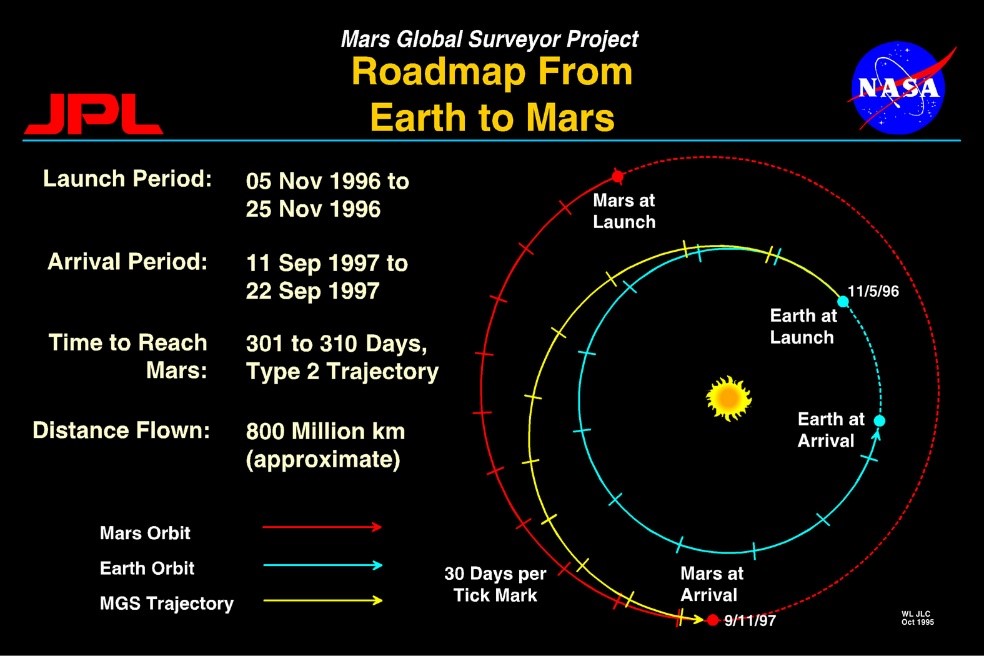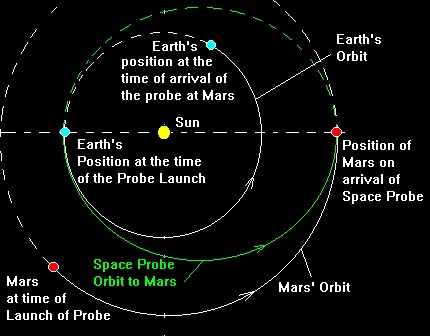
SCIENCE COOKIES
Science articles with chocolate chips
Hohmann Transfer Orbit: DIY Inexpensive Journey from Earth to Mars
Published: 30/12/2020
Author: Andrea Garma
The incredible emotion that a human being experiences when viewing frames of space launches, or if you are lucky, listening with delight as the rocket's combustion engine produces the energy necessary to take off, reflected by a magnificent roar is something that changes the perspective in a second. From that moment on, it is almost impossible not to wonder: and now ... How will it reach its destination? What route will it follow to get out of the atmosphere? How do they trace that trajectory?

Image credits: NASA
What is the transfer orbit?
It is essentially known that to move in space it is necessary to use indirect impulses in order to achieve impulsive maneuvers. However, in order to escape from the earth's atmosphere, specific routes are required, which are not only safe and efficient, but also optimal in a fuel consumption ratio.
The transfer orbit is the path to be followed by an object to move from a circular orbit of radius "x" to one of radius "y". The existence of this type of trajectory orbits, as can be deduced, is expressed in radius measurements.

Image credits: The Planetary Society. Planetary.org
Hohmann Transfer Orbit: Efficiency
At first glance, it could be said that the most efficient way to move from one place to another is the straight line, however, taking a closer look at this approach, we find that the ships, when leaving the gravitational field of the Earth, do not follow an MRU, on the contrary, they are subjected to the gravitational laws imposed by solar gravity. The above infers an elliptical movement exemplified with the one suffered by the rest of the celestial bodies in our neighborhood. If you wanted to go a straight-line route, it would probably take colossal - and expensive - amounts of fuel to give the spacecraft enough momentum for it to achieve the inefficient trajectory.
Walter Hohman was a German engineer who built a great legacy of knowledge in the aerospace field, and as it can be concluded, he is the creator of the “Hohmann transfer orbit”, born thanks to the enormous interest that the engineer had towards space flights interplanetary. This orbit traces a direction that begins with an initial impulse of the spacecraft, on the ground and a final impulse, upon arrival at our destination, which could be Mars, if we so desired. Along the way, the spacecraft draws a half ellipse with the Sun, which would be located as one of its foci and with Earth and Mars as vertices of the figure.
To form our trajectory, data such as initial and final velocity, momentum, numerical values and launch windows would be taken into account.
The initial and final speed is defined in proportions between the distances to the sun, from which the following expressions are derived:

Taking into account the land attraction, the escape velocity and the initial velocity, for impulse matters, the following expression is concluded.

And regarding the launch windows, the Hohmann transfer orbit works if the positions of the Earth and Mars coincide as extreme points of the imaginary ellipse, therefore, the ideal launch position would occur once every 781 days.
We hope that this article has been able to explain a little better how to efficiently travel from our home to Mars. Keep feeding your brain more Science Cookies!
References
http://laplace.us.es/wiki/index.php/%C3%93rbita_de_transferencia
Moreno Vega, V., & Aeyels, D. (2005). La transferencia de Hohmann y la propiedad de consumo equivalente de combustible. Universidad, Ciencia y Tecnología, 9(33), 11-16.





